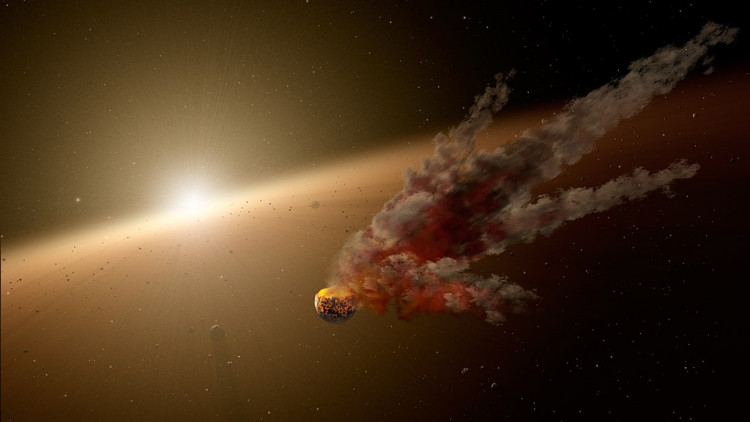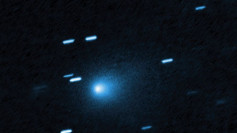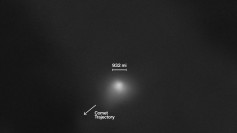A massive asteroid named 2021 NY1, which is up to three times the size of the Statue of Liberty, is set to enter Earth's orbit this month.
The Apollo-class asteroid, which is between 427 and 984 feet wide, is expected to pass close by our planet on Sept. 22, according to NASA.
The Apollo asteroids are a class of near-Earth asteroids discovered by German astronomer Karl Reinmuth in the 1930s and named after1862 Apollo. They are asteroids that intersect the Earth's orbit with a semi-major axis bigger than the Earth's but perihelion distances less than the Earth's aphelion distance.
2021 NY1 will approach Earth at a speed of roughly 21,000 miles per hour, coming within 930,487 miles (1,498,113 kilometers).
While that may appear to be quite far, NASA defines Near-Earth Objects (NEOs) as "an asteroid or comet that approaches our planet less than 1.3 times the distance from Earth to the Sun."
The distance between Earth and the moon is approximately 240,000 miles, therefore the NEO designation.
According to NASA's official NEO website, NEOs are comets and asteroids that have been forced into orbits that allow them to visit the Earth's neighborhood by the gravitational attraction of nearby planets.
Comets, which are largely made of water ice with dust particles trapped in them, formed in the freezing outer solar system, whereas most rocky asteroids developed in the warmer inner solar system between Mars and Jupiter's orbits.
The fact that comets and asteroids are essentially unmodified remnant debris from the solar system formation process some 4.6 billion years ago has piqued scientists' curiosity.
NASA has classified asteroid 2021 NY1 as a Potentially Hazardous Object (PHO) because the gravitational attraction of the planets could, over time, force an object's orbital path to develop into an Earth-crossing orbit, allowing for a future collision.
PHOs can be either an asteroid or a comet, both of which have orbits that allow them to approach the Earth close enough to cause substantial regional damage if they collide.
For the time being, however, 2021 NY1 is predicted to have little influence on the planet, as are practically all other NEOs now being tracked by NASA, and life will go on as usual.



